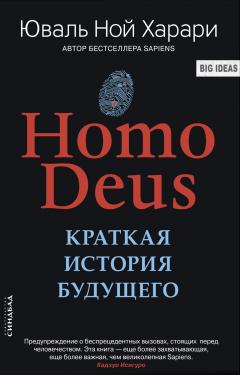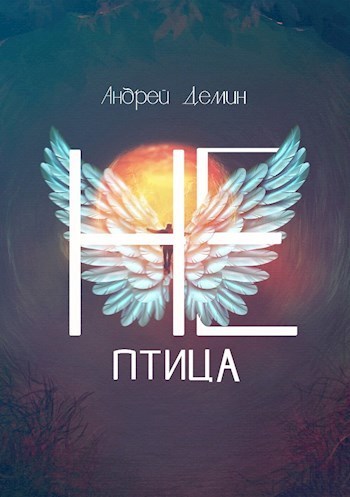Юваль Харари - Homo Deus. Краткая история будущего

Помощь проекту
Homo Deus. Краткая история будущего читать книгу онлайн
87
Harry Harlow and Robert Zimmermann, ‘Afectional Responses in the Infant Monkey’, Science 130:3373 (1959), 421–432; Harry Harlow, ‘Te Nature of Love’, American Psychologist 13 (1958), 673–685; Laurens D. Young et al., ‘Early Stress and Later Response to Sepаration in Rhesus Monkeys’, American Journal of Psychiatry 130:4 (1973), 400–405; K. D. Broad, J. P. Curley and E. B. Keverne, ‘Mother – Infant Bonding and the Evolution of Mammalian Social Relationships’, Philosophical Transactions of the Royal Soceity B 361:1476(2006), 2199–2214; Florent Pittet et al., ‘Efects of Maternal Experience on Fearfulness and Maternal Behavior in a Precocial Bird’, Animal Behavior 85:4(2013), 797–805.
88
Jacques Cauvin, Te Birth of the Gods and the Origins of Agriculture (Cambridge: Cambridge University Press, 2000); Tim Ingord, ‘From Trust to Domination: An Alternative History of Human – Animals Relations’, in Animals and Human Society: Changing Perspectives, ed. Aubrey Manning and James Serpell (New York: Routledge, 2002), 1–22; Roberta Kalechofsky, ‘Hierarchy, Kinship and Responsibility’, in A Communion of Subjects: Animals in Religion, Science and Ethics, ed. Kimberley Patton and Paul Waldau (New York: Columbia University Press, 2006), 91–102; Nerissa Russell, Social Zooarchaeology: Humans and Animals in Prehistory (Cambridge: Cambridge University Press, 2012), 207–258; Margo DeMello, Animals and Society: An Introduction to Human – Animal Studies (New York: University of Columbia Press, 2012).
89
Olivia Lang, ‘Hindu Sacrifce of 250,000 Animals Begins’, Guardian, 24 November 2009, accessed 21 December 2014,http://www.theguardian.com/world/2009/nov/24/hindu-sacrifce-gadhimai-festival-nepal.
90
Перевод с аккадского И. М. Дьяконова.
91
Benjamin R. Foster, ed., Te Epic of Gilgamesh (New York, London: W. W. Norton, 2001), 90.
92
Noah J. Cohen, Tsa’ar Ba’ale Hayim: Prevention of Cruelty to Animals: Its Bases, Development and Legislation in Hebrew Literature (Jerusalem, New York: Feldheim Publishers, 1976); Roberta Kalechofsky, Judaism and Animal Rights: Classical and Contemporary Responses (Marblehead: Micah Publications, 1992); Dan Cohen-Sherbok, ‘Hope for the Animal Kingdom: A Jewish Vision’, in A Communion of Subjects: Animals in Religion, Science and Ethics, ed. Kimberley Patton and Paul Waldau (New York: Columbia University Press, 2006), 81–90; Ze’ev Levi, ‘Ethical Issues of Animal Welfare in Jewish Tought’, in Judaism and Environmental Ethics: A Reader, ed. Martin D. Yafe (Plymouth: Lexington, 2001), 321–332; Norm Phelps, Te Dominion of Love: Animal Rights According to the Bible (New York: Lantern Books, 2002); Dovid Sears, Te Vision of Eden: Animal Welfare and Vegetarianism in Jewish Law Mysticism (Spring Valley: Orot, 2003); Nosson Slifin, Man and Beast: Our Relationships with Animals in Jewish Law and Tought (New York: Lambda, 2006).
93
Talmud Bavli, Bava Metzia, 85:71.
94
Christopher Chapple, Nonviolence to Animals, Earth and Self in Asian Tr a dit i on s (New York: State University of New York Press, 1993); Panchor Prime, Hinduism and Ecology: Seeds of Truth (London: Cassell, 1992); Christopher Key Chapple, ‘Te Living Cosmos of Jainism: A Traditional
Science Grounded in Environmental Ethics’, Daedalus 130:4 (2001), 207–224; Norm Phelps, The Great Compassion: Buddhism and Animal Rights (New York: Lantern Books, 2004); Damien Keown, Buddhist Ethics: A Very Short Introduction (Oxford: Oxford University Press, 2005), ch. 3; Kimberley Patton and Paul Waldau, ed., A Communion of Subjects: Animals in Religion, Science and Ethics (New York: Columbia University Press, 2006), esp. 179–250; Pragati Sahni, Environmental Ethics in Buddhism: A Virtues Approach (New York: Routledge, 2008); Lisa Kemmerer and Anthony J. Nocella II, ed., Call to Compassion: Refections on Animal Advocacy from the World’s Religions (New York: Lantern, 2011), esp. 15–103; Lisa Kemmerer, Animals and World Religions (Oxford: Oxford University Press, 2012), esp. 56–126; Irina Aristarkhova, ‘Tou Shall Not Harm All Living Beings: Feminism, Jainism and Animals’, Hypatia 27:3 (2012): 636–650; Eva de Clercq, ‘Karman and Compassion: Animals in the Jain Universal History’, Religions of South Asia 7 (2013): 141–157.
95
Naveh, ‘Changes in the Perception of Animals and Plants’, 11.
96
Понятие было популяризировано американским документальным телесериалом о природе уникальности человека («Человеческая искра», 2010), где ведущим выступает актер Алан Алда.
97
Выражение пошло от названия книги «Сила есть право, или Выживание наиболее приспособленных», выпущенной неизвестным автором под псевдонимом Рагнар Редбёрд в 1896 году.
98
‘Evolution, Creationism, Intelligent Design’, Gallup, accessed 20 December 2014, http://www.gallup.com/poll/21814/evolution-creationism-intelligent-design.aspx; Frank Newport, ‘In US, 46 per cent Hold Creationist View of Human Origins’, Gallup, 1 June 2012, accessed 21 December 2014, http://www.gallup.com/poll/155003/hold-creationist-view-human-origins.aspx.
99
Gregg, Are Dolphins Really Smart?, 82–83.
























